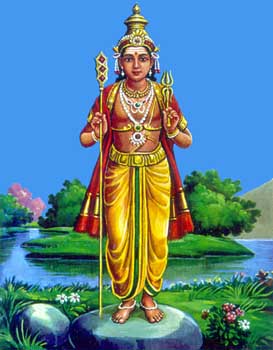
|
|||
|
| |||
Iranian Sraosa and Indian SkandaBy Sukumar Sen, M.A., Ph.D.
The Avestan deity Sraosa and the Indian deity Skanda - Kumara - Karttikeya - Guha have not a few common features which, so far as I know, have not been noted before. The Sanskritic equivalent of Sraosa is Śrausa (a derivative from the aorist base of shra and literally meant 'obedience, allegiance'; it occurs as an epithet of two of the attendants of the Sun god in some of the mediaeval iconographical texts. Thus, from a quotation by Sarvananda in the Tīkāsarvasa (middle of the twelfth century): yamo'pi daksine pārs've khyāto māthara-samjnāyaya, Here rājas'rasau, meaning 'obedient messengers of the king', qualifies Hara and Guha. In Avestan the deity has lost his proper name and is known only as Sraosa, being the obedient and watchful messenger of Ahura Mazda. Both deities are young, good-looking, swift, active and victorious. Sraosa is a killer of the demons (jantā daēvayā drujō); Skanda is the leader (senānī) of the army of the gods. The Iranian god is remembered for his victory over Aēsma, the demon of lust and hate (in Brahmānic mythology this credit is given to Skanda's father Śiva, the smarajit, and in Buddhistic mythology to the Buddha, the mārajit), while his Indian counterpart is extolled as the killer of the demon Tāraka.l In Avestan the cock is the animal sacred to Sraosa. In later Hindu mythology Karttikeya rides on a peacock (mayūra).2 Sraosa is borne in a chariot drawn by four ruddy horses (yim cathwāro aurvantō aurusa…vazanti). There is no reference to this in BrahmĀnical mythology, although as a satellite of the Sun god, like Aruna, he must have done so. In the Rgveda, however, there is a slight hint. In a hymn to Yama (X. 135) Kumara (generally though unconvincingly interpreted as 'boy') is repeatedly mentioned with the chariot of Yama, 'the wheel-less chariot' which has one pole but faces in all directions (acakram…ekesam vis'vatah prāncam prīcam). There is little doubt that the Kumara here is the prototype of post-Vedic Kumara and a counterpart of Iranian Sraosa. End Notes
Article from Indo-Iranica, Vol IV No. 1, July 1950, p. 27. See also these related research articles about the cult of Skanda-Kumara in Sanskrit sources:
Index of research articles on Skanda-Murukan
|
